David Yao (MASc 8T1, PhD 8T3), MIE alumnus and professor of industrial engineering at Columbia University, has been elected as Member to the U.S. National Academy of Engineering (NAE). Members—including U of T Engineering Dean Cristina Amon—rank among the world’s most accomplished engineers.
NAE membership honors those who have made outstanding contributions to engineering research, practice, or education. That includes significant contributions to the engineering literature, to the pioneering of new and developing fields of technology, and to making major advancements in traditional fields of engineering, or developing innovative approaches to engineering education.
Yao was cited for his research of stochastic systems and their applications in engineering and service operations. “I am deeply grateful for the kindness and generosity of many colleagues at Columbia and elsewhere in helping me throughout my career,” said Yao, in an announcement made by Columbia University. As a PhD student at U of T’s Department of Mechanical & Industrial Engineering (MIE), Yao was supervised by Professor John Buzacott (MIE).
“On behalf of the MIE community, I would like to congratulate David Yao on this prestigious honour,” said Jean Zu, chair of MIE. “His election to NAE brilliantly demonstrates the high-calibre of engineers we graduate from our department. Yao is among many outstanding alumni making important contributions to engineering through leading-edge research.”
Your smartphone may keep getting smarter, but its network is struggling to keep up.
Demand for fast, cheap and plentiful data continues to surge, but wireless communications infrastructure is reaching the limits of what it can provide to users—unless we can find more efficient ways to engineer our networks.
Professor Wei Yu (ECE) is doing exactly that. A professor in The Edward S. Rogers Sr. Department of Electrical & Computer Engineering, Yu has been awarded a 2015 E.W.R. Steacie Memorial Fellowship from the Natural Sciences and Engineering Research Council (NSERC).
The award allows researchers who show extraordinary promise to focus on their research, relieved of teaching and administrative duties for a two-year term. Each Fellow receives a research grant of $250,000. Up to six Fellows are named each year, and received their awards from the Governor General of Canada, David Johnston, at a ceremony at Rideau Hall in Ottawa on February 17, 2015.
“Being able to focus on research one-hundred per cent of the time is hugely important,” said Professor Yu. “The Steacie Fellowship makes it possible for me to recruit the best students and post-docs to my research program to help develop the next generation of wireless technologies.”
Professor Yu’s work tackles the design and optimization of wireless communication systems. “I’m passionate about information theory, which is the mathematical foundation of modern digital communications,” he said.
Yu is currently investigating novel ways that base-stations and smartphones in a radio-access network may cooperatively transmit and receive information to and from each other, in order to enhance signal quality and to reduce interference for wireless data access. His discoveries have impact on the network architecture, transceiver design and network deployment for future generation wireless cellular services.
Professor Yu’s work is already hugely influential—in 2014 he was named to Thomson Reuters’ rankings of the most highly cited scientific researchers in the world. He is a Fellow of the IEEE, and currently holds a Canada Research Chair in Information Theory and Wireless Communications.
“Wei Yu is known internationally not only as an exceptional scholar in the communications field, but for the applicability of his work to engineering practice,” said Professor Farid Najm, chair of The Edward S. Rogers Sr. Department of Electrical & Computer Engineering. “We are extremely proud and gratified to see him recognized with one of the most prestigious research awards in the country.”
University of Toronto researchers received three of the six E.W.R. Steacie awards conferred this year—the other Fellows include Professor Aaron Wheeler of the Department of Chemistry and Professor Leah Cowan of the Department of Molecular Genetics.
“My congratulations to all our NSERC award winners,” said Professor Vivek Goel, U of T’s vice president of research and innovation. “They are conducting both fundamental research that is pushing the boundaries of human knowledge and applied research that will improve health and quality of life worldwide in the coming years. We are grateful to NSERC for this recognition of and investment in U of T researchers.”
Researchers from University of Toronto Faculty of Applied Science & Engineering have been awarded a total of $636,300 from the University’s own research funding source, the Connaught Fund.
The new awards are part of over $900,000 that was distributed across U of T through Connaught’s Innovation Award, Summer Institute and Cross Divisional/ Cross Cultural programs.
Founded in 1972, the Connaught Fund was created from the sale of the Connaught Laboratories. The labs mass-produced insulin, the Nobel Prize-winning discovery of U of T’s Frederick Banting, Charles Best, John Macleod and Charles Collip. The University has stewarded the fund in the years since, awarding more than $130 million to U of T researchers.
Today, the fund invests approximately $4 million annually in emerging and established scholars from the full spectrum of research and scholarship throughout U of T.
“Thanks to the innovation of the U of T researchers who discovered insulin, the Connaught Fund continues to enable innovation to thrive today,” said Professor Vivek Goel, vice president, research and innovation. “Each of the projects being funded through these new awards will, in its own way, move global society forward on fronts that affect us all every day. Thanks to all of our Connaught researchers for their excellent work.”
The Innovation Awards are designed to help accelerate the development of promising technology and promote commercialization and/or knowledge transfer.
This year’s U of T Engineering recipients include:
 Edgar Acosta (ChemE)
Edgar Acosta (ChemE)
“Microencapsulated self-microemulsifying drug delivery system”
 Constantin Christopoulos (CivE)
Constantin Christopoulos (CivE)
“Implementation of the GIB system for the seismic upgrade of a real soft-storey building retrofit”
 Ofer Levi (IBBME)
Ofer Levi (IBBME)
“Miniature, implantable multimodality optical imaging systems for drug screening in awake rodents”
 Mo Mojahedi (ECE)
Mo Mojahedi (ECE)
“Multimode spectroscopy with plasmonics and hybrid plasmonics sensors”
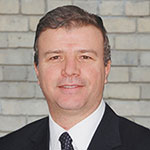 Ridha Ben Mrad (MIE)
Ridha Ben Mrad (MIE)
“A cell phone camera module incorporating a micro-electrostatic actuator enabling autofocus (AF) and optical image stabilization (OIS) capabilities”
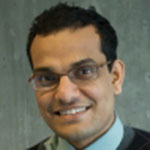 Radhakrishnan Mahadevan (ChemE)
Radhakrishnan Mahadevan (ChemE)
“Production of bio-based 1,3-butanediol”
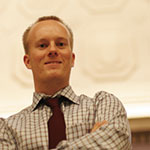 Edward Sargent (ECE)
Edward Sargent (ECE)
“Commercialization of a highly efficient hybrid quantum dot/silicon solar cell”
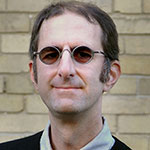 David Steinman (MIE)
David Steinman (MIE)
“A disruptive, physics-based ultrasound simulation platform for accelerating sonographer training”
With files from Paul Fraumeni.
Whether it’s mimicking ocean mussels to create powerful non-toxic glue, or designing energy technologies that can store power for a whole city block, U of T undergraduate engineering students have the opportunity to lead innovative research that improves both our communities and ecosystems.
Here are three materials science and engineering students who are designing a greener tomorrow:
Environmentally-friendly, non-stick coatings inspired by mussels—Robert Alexander
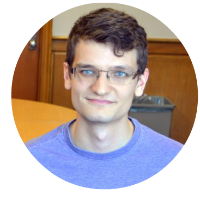 The Quagga Mussel is an invasive species found in the North American Great Lakes. It self-produces a protein-based “glue”—known as byssus—that allows the mussel to attach to a range of surfaces, even in water. Most often, it attaches itself to drainage pipes and ship hulls, resulting in major clogs and increased drag forces. The rapid accumulation of these mussels results in a variety of performance and economic issues, not to mention costly removal processes.
The Quagga Mussel is an invasive species found in the North American Great Lakes. It self-produces a protein-based “glue”—known as byssus—that allows the mussel to attach to a range of surfaces, even in water. Most often, it attaches itself to drainage pipes and ship hulls, resulting in major clogs and increased drag forces. The rapid accumulation of these mussels results in a variety of performance and economic issues, not to mention costly removal processes.
Robert Alexander (MSE 1T5), a fourth year materials engineering undergraduate student, works with professors Benjamin Hatton (MSE) and Eli Sone (IBBME, MSE) to investigate a variety of these mussels. Their research involved two objectives: first, to figure out the composition of its self-produced “glue” to determine their adhesion capabilities, and, second, to test their strength on a special, non-toxic coating the group has developed. This non-toxic coating, based on a parent technology known as Slippery Liquid-Infused Porous Surfaces (SLIPS), utilizes micro-sized holes with a repellent liquid film on the interface to maximize non-stick capabilities. In other words, they’re developing the stickiest non-toxic glue and its countermeasure at the same time.
Increasing the shelf-life of organic solar cells—Stephanie Nyikos
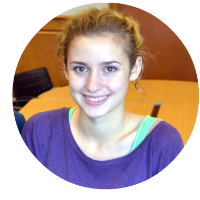 Organic materials-based solar cells present the best of both worlds: they harvest the sun’s energy without producing greenhouse gases and they’re made of environmentally-friendly, biodegradable compounds. One problem, however, is that their efficiency decreases significantly when in storage. This could pose a notable concern, particularly when panels might be put away during transportation, or covered by obstacles like snow.
Organic materials-based solar cells present the best of both worlds: they harvest the sun’s energy without producing greenhouse gases and they’re made of environmentally-friendly, biodegradable compounds. One problem, however, is that their efficiency decreases significantly when in storage. This could pose a notable concern, particularly when panels might be put away during transportation, or covered by obstacles like snow.
Stephanie Nyikos (MSE 1T6) works with chemical engineering professor Tim Bender (ChemE) to investigate nitrogen encapsulation of these organic photovoltaics to preserve their efficiency during downtime. The preliminary data in her research has pointed to increased shelf life and stability of the organic solar cells she stored in a sealed nitrogen environment versus ambient surroundings.
“The success of encapsulating these organic solar cells is the first step to taking this technology outside of the lab and into the real world,” says Bender. “We’re quite excited to take this testing to a further stage.”
Engineering better and more cost-effective super-capacitors—Yee Wei Foong
 Working with his mentor, Matthew Genovese (MSE PhD candidate) in Professor Keryn Lian’s (MSE) Flexible Energy & Electronics Laboratory, Yee Wei Foong (MSE 1T5) was able to successfully synthesize germanomolybdate—a low-cost alternative used to modify nano-carbon capacitor electrodes. Not only does his new material work, but has also demonstrated a dramatic increase in energy storage on a micro-sized, lab-scale device. Foong has since co-authored two peer-reviewed journal articles and a conference presentation on this discovery.
Working with his mentor, Matthew Genovese (MSE PhD candidate) in Professor Keryn Lian’s (MSE) Flexible Energy & Electronics Laboratory, Yee Wei Foong (MSE 1T5) was able to successfully synthesize germanomolybdate—a low-cost alternative used to modify nano-carbon capacitor electrodes. Not only does his new material work, but has also demonstrated a dramatic increase in energy storage on a micro-sized, lab-scale device. Foong has since co-authored two peer-reviewed journal articles and a conference presentation on this discovery.
Foong has been working on developing cost-effective materials for super-capacitors since the summer after his second year. Specifically, he has been focused on finding an inexpensive substitute for ruthenium dioxide (RuO2)—the current state-of-the-art material used for high-performance electrodes.
For his fourth year thesis, Foong is taking his initial success to find out if his new material will produce similar results on conventional-sized devices. “The energy storage readings on our scale-up applications are looking quite promising,” says Genovese.
“Our students fully understand the need for new materials and their critical role in building a sustainable future,” says Professor Jun Nogami, Chair of the Department of Materials Science & Engineering. “My sincerest thanks to our professors and graduate researchers who tirelessly guide and mentor our young bright minds to bring them to their fullest potential.”
From smart sensors that limit driver distraction to new tools that convert methane into useful products, researchers at U of T Engineering got a major boost this week with a $3.5 million investment from the Natural Sciences and Engineering Research Council of Canada (NSERC).
NSERC is kick-starting eight new projects in the Faculty through Strategic Partnership Grants for Projects—a program designed to fund industry-related research and training in early-stage, high-risk projects that might otherwise have trouble attracting the funds needed to carry out their research.
Professor Cathy Chin (ChemE) is co-leading a project alongside professors Charles Mims (ChemE) and Doug Perovic (MSE) that received $288,425 to explore new methods of transforming greenhouse gases into valuable products.
“We’re developing a range of nanoparticles—what we call ‘catalyst materials’—that can convert methane and carbon dioxide into ‘syngas’,” said Professor Chin. “This syngas is a fuel-gas mixture that can later be used to generate energy or make agricultural fertilizers.”
The research project will be housed within Chin’s Multidisciplinary Laboratory for Innovative Catalytic Science in the Department of Chemical Engineering and Applied Chemistry, and it will make use of the Faculty’s microscopic and spectroscopic tools in the new Ontario Centre for Characterization of Advanced Materials (OCCAM) that are unique to Canada.
“In its most basic sense, we are fabricating nanoparticles that allow new chemistry to happen for producing clean fuels, energies, and chemicals,” she said.
Other successful investigators in the Faculty include:
- Grant Allen (ChemE), $472,000 awarded for: “Developing biofilm-based microalgal bioreactors for the efficient production of fuels, chemicals and clean water”
- George Eleftheriades (ECE), $495,948 awarded for: “Field-discontinuity metasurfaces for electromagnetic wave manipulation”
- Ramin Farnood (ChemE), $447,700 awarded for: “Developing novel elecro-spun nano-fibre membrane adsorption systems for water treatment.”
- Peter Herman (ECE), $444,621 awarded for: “Quantized structuring of transparent film and plates with ultrafast laser interference and filamentation.”
- Charles Jia (ChemE), $482,245 awarded for: “High performance, low-cost porous carbons from oil petroleum coke.”
- Frank Kschischang (ECE), $432,371 awarded for: “Error control for terabit links: spatially-coupled staircase codes.”
- Konstantinos Plataniotis (ECE), $438,500 awarded for: “DREAMs: Enhancing driver interaction with digital media through cognitive monitoring.”
Across the University of Toronto, 12 project teams received funding through this round of NSERC’s Strategic Partnership Grants for Projects, including the eight engineering teams, totalling more than $5.3 million. (Read more about other U of T projects)
“These 12 projects have the potential to bring great benefit to society in coming years, and we are extremely grateful to NSERC for championing this kind of work, and for its continued investment in U of T research,” said Professor Vivek Goel, U of T’s vice-president of research and innovation.
With files from Sarah McDonald and Jenny Hall.
The Faculty of Applied Science & Engineering extends its warmest congratulations to the remarkable athletes who competed with the Varsity Blues swimming team in the Ontario University Athletics (OUA) Championships on February 5 and 6, 2015.
Nine Engineering students competed, and both the male and female swimming teams took home gold medals.
The Blues women won their second consecutive OUA title, accumulating 887 points as a team.
The men’s team claimed their 12th consecutive OUA title, finishing with a combined score of 986.5 points. Engineering student Oliver Straszynski was honoured as male rookie of the year.
To learn more about the Engineering students who participated, visit their Varsity Blues profiles:
- Dawn Virginillo
- Lisa van Breugel
- Matthew Myers
- Oliver Straszynski
- Ross Phillips
- Edward Liu
- Keith Eriks
- Thomas Schaepsmeyer
- Alex Magnan
Read more about the U of T Varsity Blues swimming team at the 2015 OUA Championships.
